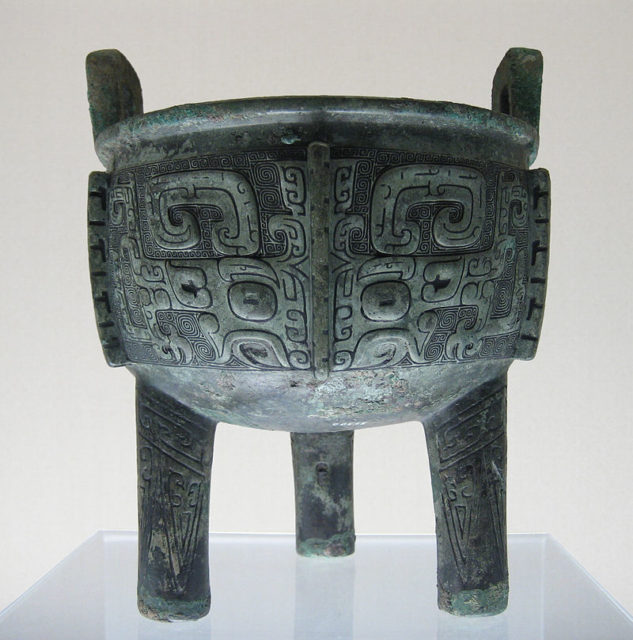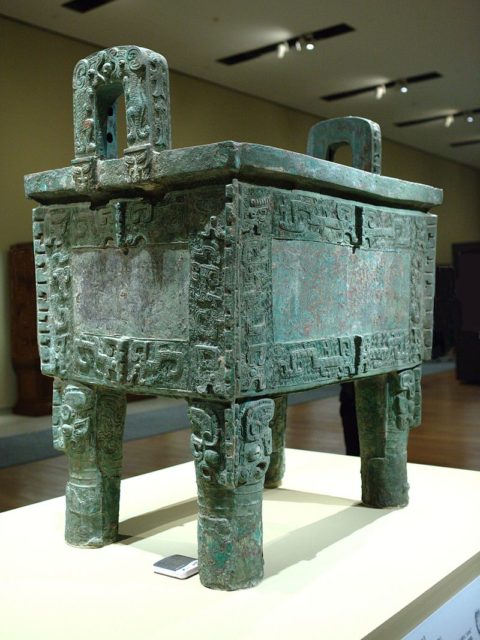Unearthed in a tomb chamber near the Chinese city of Xinyang was a large clay pot. Inside this pot were bones that have been analyzed as the forelegs of a cow.
What cow bones were doing in this pot in a tomb is uncertain, but there are theories about them. Jokingly penned as an ancient beef stew, the presence of the bones is currently little understood.
What is known is that the bowl is a form of “ding,” and it has been dated back to the kingdom of Chu, which reigned in central and eastern China from 1,100 BC to 223 BC. Also in the tomb are various other bowls and containers in various states of repair.

Ding is an ancient Chinese container that sits on legs, with a lid and loop handles. The earliest examples of these were first made of clay and then of bronze. A ding in the tomb indicates a higher status of the person; if more are found this would indicate how important the person actually was. The tomb itself was in terrible condition and was quite water damaged. The ding also contained muddy water, so the whole thing was taken out and sent to be analyzed by experts at a lab.
It was thought that dings were used as cooking vessels initially, and later the bronze ones were used as ceremonial sacrifice vessels. At present, tests are still being carried out on the recovered ding to see if it was used to prepare food for the dead, as it could have been just as likely used to carry the slaughtered animals for the burial ceremony.
Further analysis is needed to see if the pot has been used over an open flame, which would suggest more of a cooking purpose than a sacrificial one. Due to the poor condition of the tomb, delicate handling is required so that the artifact is not damaged in any way, Mail Online reported.

A good example of a heavy bronze ding is the Si Mu Wu Giant Rectangular Ding on display in the National Museum of China in Beijing. This example stands 133 cm high with four legs; the wall of it is 4 cm thick, and it weighs a huge 832 kg.
It is one of the heaviest and largest unearthed to date, and was discovered in 1939 in a small village in the Henan province.
